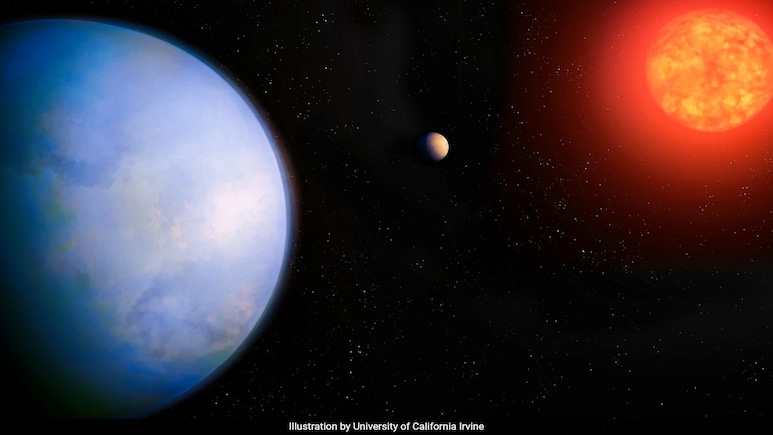
An international team of scientists, including researchers from Penn State University, has discovered a potential "super-Earth" located less than 20 light-years from Earth. The newly identified exoplanet, named GJ 251 c, is believed to be nearly four times more massive than our planet and is likely composed of rocky material.
According to the researchers, the discovery offers fresh hope in the ongoing search for Earth-like planets that could potentially support life. Due to its mass and proximity to its host star, GJ 251 c falls into the category of a "super-Earth"-a class of exoplanets that are larger than Earth but smaller than gas giants like Neptune.
While further study is needed to confirm whether the planet has conditions suitable for life, its relatively close distance to Earth makes it an exciting candidate for future observation with powerful telescopes.
Scientists emphasize that finding rocky planets in nearby solar systems significantly improves the chances of studying their atmospheres and surface conditions in detail. This could eventually help answer key questions about the possibility of life beyond Earth.
"We look for these types of planets because they are our best chance at finding life elsewhere,” said Suvrath Mahadevan, the Verne M. Willaman Professor of Astronomy at Penn State and co-author on a paper about the discovery published today (October 23) in The Astronomical Journal. “The exoplanet is in the habitable or the ‘Goldilocks Zone,' the right distance from its star that liquid water could exist on its surface, if it has the right atmosphere."
For decades, the search for planets that might host liquid water, and perhaps life, has driven astronomers to design and construct advanced telescopes and computational models capable of detecting even the faintest signals from starlight. This latest discovery was the result of two decades of observational data and offers one of the most promising prospects yet for searching for signs of life on other planets, Mahadevan said.
The exoplanet was found using data from the Habitable-Zone Planet Finder (HPF), a high-precision, near-infrared spectrograph — a complex prism that breaks apart signals from starlight — fixed to the Hobby-Eberly Telescope at the McDonald Observatory in Texas. Penn State researchers led the design and construction of the HPF, built to detect Earth-like planets in the habitable zones of nearby stars.
"We call it the Habitable Zone Planet Finder, because we are looking for worlds that are at the right distance from their star that liquid water could exist on their surface. This has been the central goal of that survey,” Mahadevan said in the news release. “This discovery represents one of the best candidates in the search for atmospheric signature of life elsewhere in the next five to ten years.”
Track Latest News Live on NDTV.com and get news updates from India and around the world

